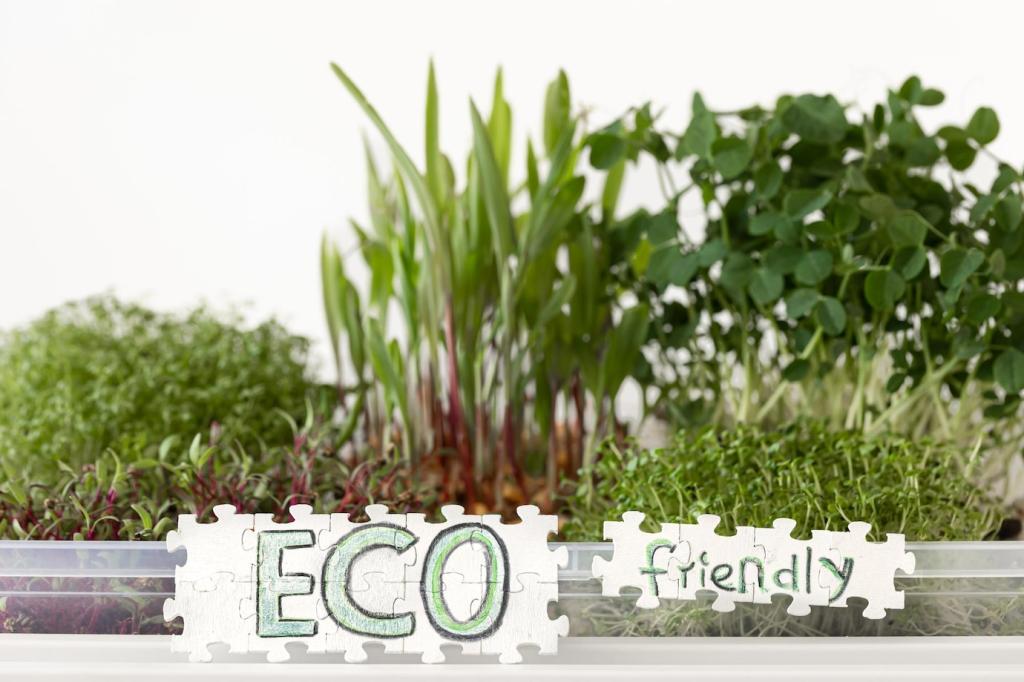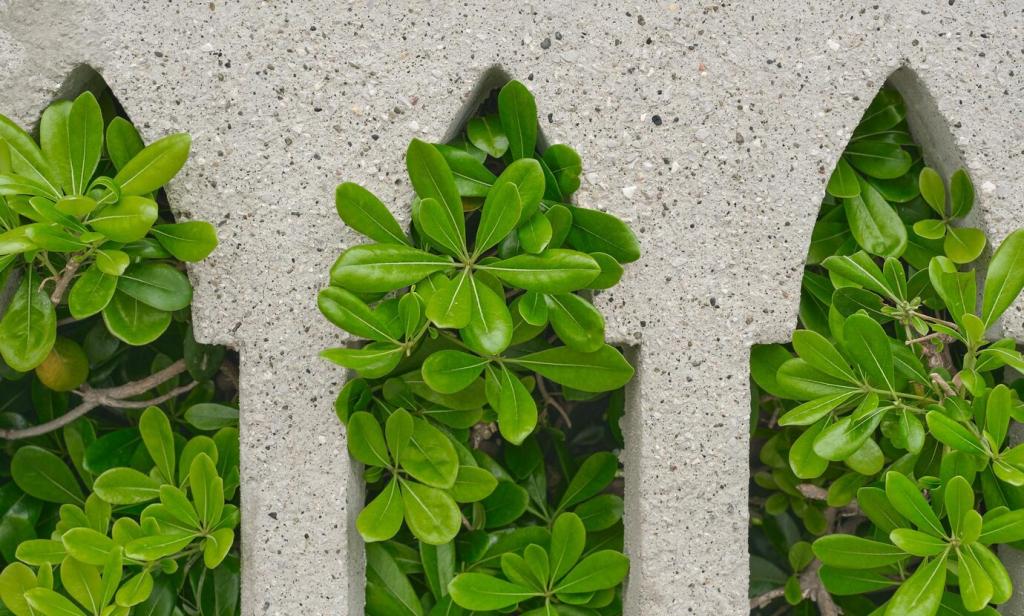Lower-Carbon Binders and Concrete Alternatives
Slag cement, calcined clay, metakaolin, and well-specified fly ash reduce portland cement content while maintaining strength. Ask for mix designs with environmental product declarations. Proper curing is essential, especially in cool weather, to achieve target strengths and long-term durability in patios and walkways.
Lower-Carbon Binders and Concrete Alternatives
Some pavers and blocks inject captured CO2 during curing, permanently mineralizing carbon into the matrix. Emerging materials even grow limestone using algae. Have you seen these eco-friendly hardscaping materials locally? Subscribe for field updates, supplier lists, and case studies as availability accelerates.



